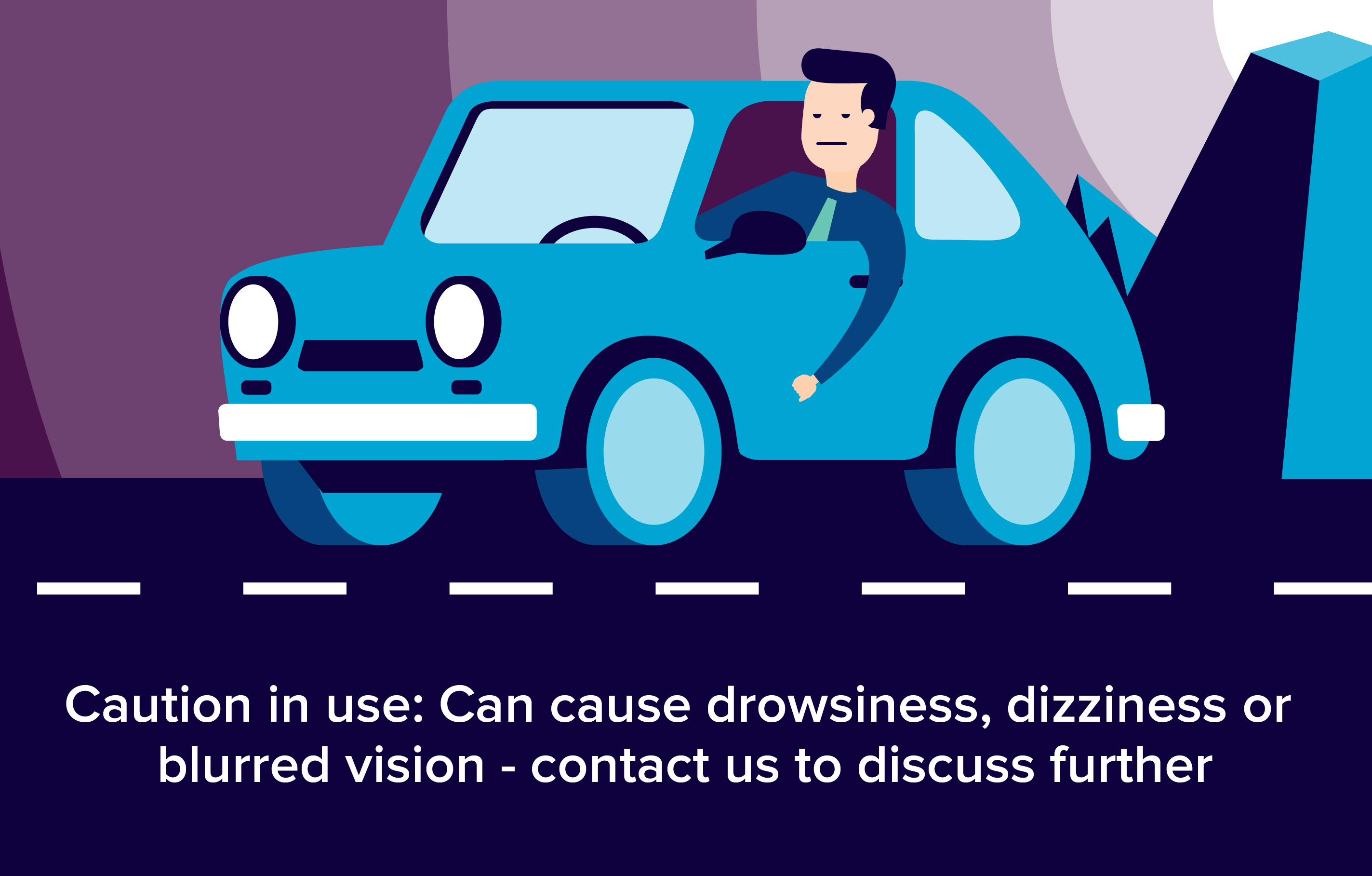Exocin eye drops contain the active ingredient ofloxacin, which is a type of medicine called a quinolone antibiotic. Antibiotics are used to treat infections caused by bacteria.

What is it used for?
- Bacterial infections of the eyes, eg bacterial conjunctivitis.
How does it work?
- Exocin eye drops contain the active ingredient ofloxacin, which is a type of medicine called a quinolone antibiotic. Antibiotics are used to treat infections caused by bacteria.
- Ofloxacin works by killing the bacteria that are causing an infection. It does this by entering the bacterial cells and inhibiting a bacterial enzyme called DNA-gyrase. This enzyme is involved in replicating and repairing the genetic material (DNA) of the bacteria. If this enzyme doesn't work, the bacteria cannot reproduce or repair themselves and this kills the bacteria.
- Exocin eye drops are administered into the eye to treat various types of bacterial eye infections.
How do I use it?
- Exocin eye drops contain the preservative benzalkonium chloride, which can be absorbed by soft contact lenses and cause eye irritation. For this reason if you wear soft contact lenses, you should remove them before putting in these eye drops. Wait at least 15 minutes before putting your lenses back in. However, if at all possible it is best not to wear your contact lenses at all while you are treating an eye infection.
- Wash your hands before using the eye drops.
- One to two drops should be put into the affected eye(s) every two to four hours for the first two days of treatment. After this the drops should be used four times a day for as long as your doctor has told you to use them. The length of treatment should not exceed ten days. Click here for instructions on how to put in the eye drops.
- When using the eye drops you should take care to not touch the tip of the dropper to any surface, or to your eye, in order to avoid contaminating the medicine.
- If you forget to use the drops put the missed dose in as soon as you remember, unless it is almost time for your next dose, in which case you should just apply your next dose as usual and miss out the forgotten dose. Don't use a double dose to make up for a forgotten dose.
- Unless your doctor tells you otherwise, it is important that you finish the prescribed course of this antibiotic medicine, even if it seems the infection has cleared up. Stopping the course early increases the chance that the infection will come back and that the bacteria will grow resistant to the antibiotic.
Use with caution in
- Elderly people.
- People who are allergic to other quinolone-type antibiotics, eg ciprofloxacin, norfloxacin.
- People with ulcers or other defects on the front part of the eye (corneal ulcers or epithelial defects).
- Heart disease, such as heart failure, recent heart attack, very slow heart rate (bradycardia) or irregular heart beats (arrhythmias).
- People with a personal or family history of a type of abnormal heart rhythm, seen on a heart monitoring trace (ECG) as a 'prolonged QT interval'.
- People with disturbances in the normal levels of salts (electrolytes) in their blood, for example low magnesium or potassium levels.
Not to be used in
- Allergy to any of the ingredients.
This medicine should not be used if you are allergic to one or any of its ingredients. Please inform your doctor or pharmacist if you have previously experienced such an allergy.
If you feel you have experienced an allergic reaction, stop using this medicine and inform your doctor or pharmacist immediately.
Pregnancy and breastfeeding
Certain medicines should not be used during pregnancy or breastfeeding. However, other medicines may be safely used in pregnancy or breastfeeding providing the benefits to the mother outweigh the risks to the unborn baby. Always inform your doctor if you are pregnant or planning a pregnancy, before using any medicine.
- When ofloxacin is administered into the eye it is possible for it to pass into the bloodstream. The safety of the eye drops for use in pregnancy has not been established and they are not recommended for use in pregnancy unless considered essential by your doctor. This is because when ofloxacin is taken by mouth it has been shown to cause joint disease in immature animals and may therefore have this effect in humans. There are usually alternative antibiotics available that are safer for use during pregnancy. Seek medical advice from your doctor.
- Ofloxacin may pass into breast milk after application into the eye. These eye drops are not recommended for use during breastfeeding, as there are usually safer alternative antibiotics available. Seek medical advice from your doctor.
Side effects
Medicines and their possible side effects can affect individual people in different ways. The following are some of the side effects that are known to be associated with this medicine. Just because a side effect is stated here does not mean that all people using this medicine will experience that or any side effect.
- Eye stinging or burning.
- Eye redness.
- Eye pain or itching.
- Blurred vision.
- Sensation of something in the eye.
- Sensitivity of the eyes to light (photophobia).
- Dry or watery eyes.
- Eyelid itching.
- Swelling around the eyes or face.
- Dizziness.
- Headache.
- Feeling sick.
- Numbness.
- Abnormal heart rhythm.
The side effects listed above may not include all of the side effects reported by the medicine's manufacturer.
For more information about any other possible risks associated with this medicine, please read the information provided with the medicine or consult your doctor or pharmacist.
How can this medicine affect other medicines?
If you are using more than one type of eye drop you should administer them at least five minutes apart, to prevent the second drop washing away the first. Use eye gels or ointments last.
Ofloxacin eye drops are unlikely to be absorbed into the bloodstream in sufficient quantities to affect medicines that are being taken by mouth. However, you should tell your doctor or pharmacist if you are using any other medicines, including those bought without a prescription and herbal medicines, before you start treatment with this medicine, so they can check that the combination is safe.
These eye drops should be used with caution in people taking medicines that can increase the chance of abnormal heart rhythms ('prolonged QT interval' on a heart monitoring trace or ECG), for example those listed below:
- antiarrhythmics (medicines to treat abnormal heart beats), eg amiodarone, procainamide, disopyramide, sotalol
- the antihistamines astemizole, mizolastine or terfenadine
- antipsychotics, eg thioridazine, pimozide, sertindole , haloperidol
- arsenic trioxide
- atomoxetine
- certain antidepressants, eg amitriptyline, imipramine, maprotiline
- certain antimalarials, eg halofantrine, chloroquine, quinine, mefloquine, Riamet
- cisapride
- dronedarone
- droperidol
- intravenous erythromycin or pentamidine
- methadone
- moxifloxacin.
References:
https://www.drugs.com/uk/exocin-3-mg-ml-eye-drops-solution-leaflet.html
http://www.netdoctor.co.uk/medicines/eyes/a6699/exocin-eye-drops-ofloxacin/
https://www.medicines.org.uk/emc/medicine/5285
http://patient.info/medicine/ofloxacin-eye-drops-exocin


